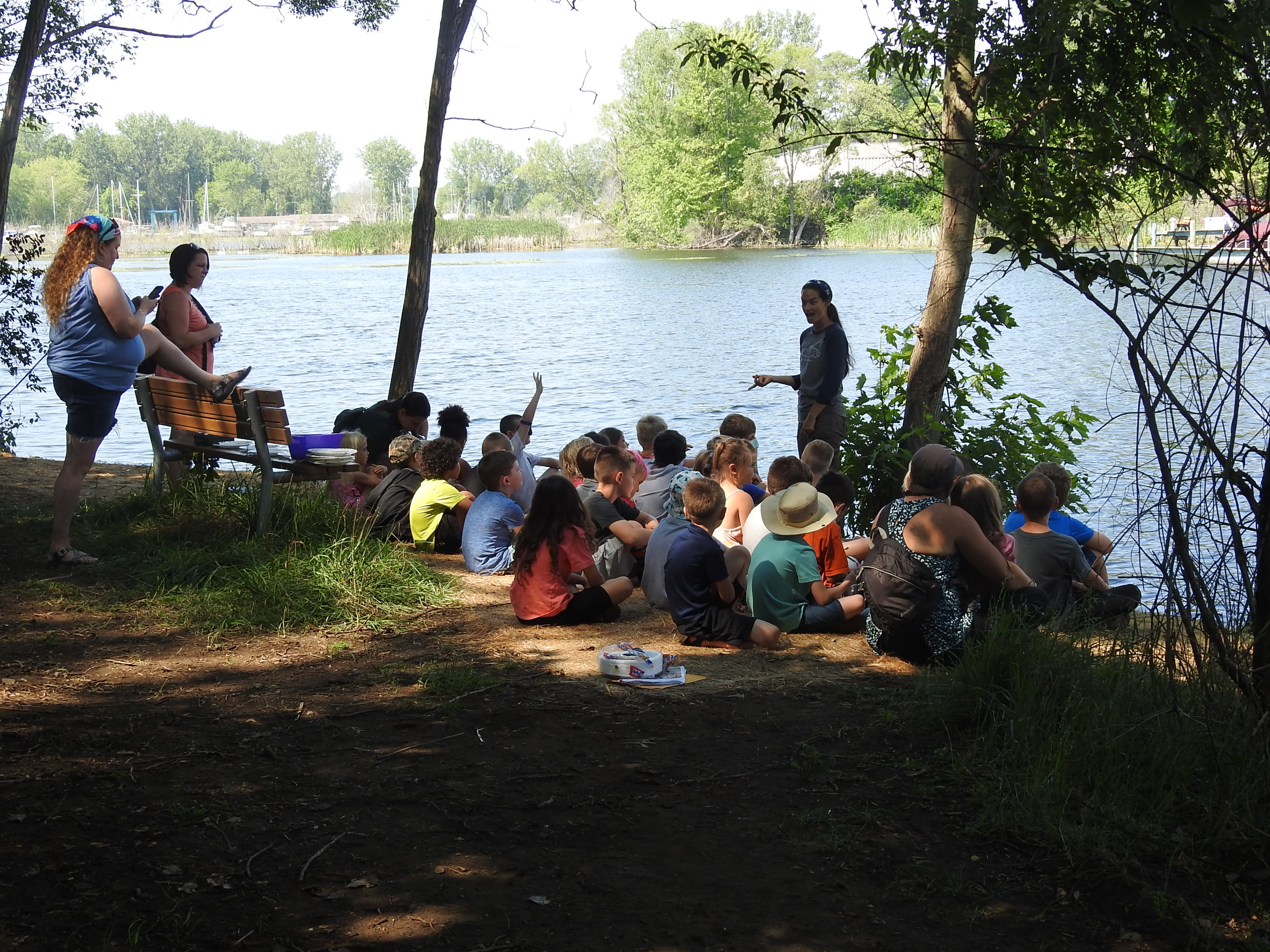The web Browser you are currently using is unsupported, and some features of this site may not work as intended. Please update to a modern browser such as Chrome, Firefox or Edge to experience all features Michigan.gov has to offer.
Harnessing investments to accelerate restoration of Michigan's Areas of Concern
August 31, 2023
In the 1987 amendments to the Great Lakes Water Quality Agreement of 1972, the federal governments of the United States and Canada committed to restoring beneficial uses in designated Areas of Concern (AOC). AOCs were defined as “geographic areas designated by the parties where significant impairment of beneficial uses has occurred as a result of human activities at the local level.” Thirty-one U.S. AOCs were subsequently identified, 14 located wholly or partially in Michigan.

Children get a taste of the outdoors at the Muskegon Lake Nature Preserve as progress continues on restoration of the Muskegon Lake Area of Concern. Photo courtesy of West Michigan Shoreline Regional Development Commission.
The overall goal of the program is to address these impaired beneficial uses in each AOC and formally remove or “delist” them from the designated AOC list. While many types of actions can address beneficial use impairments (BUIs), the most common ones are remediating contaminated sediments and restoring degraded habitat to improve conditions for fish and wildlife. Sediment and habitat projects are implemented as federal and state agencies are successful in recruiting local partners and identifying suitable funding sources.
From 1987-2004, there was little progress in cleaning up AOCs, due primarily to a lack of funding. The federal Great Lakes Legacy Act (GLLA) was authorized in 2002, with the first appropriation in 2004. The GLLA provided significant federal funding to clean up legacy contaminated sediments, a widespread problem in AOCs. The very first GLLA cleanup project was completed in 2005 in the Black Lagoon, an inlet along the Detroit River.
Progress in the AOC Program was accelerated even further in 2010 with the establishment of the Great Lakes Restoration Initiative (GLRI), a federal program that has provided roughly $300 million annually for Great Lakes restoration. Approximately one-third of this GLRI funding has supported work in AOCs.
Three AOCs have been successfully restored and “delisted” as work continues on the 11 others. State, federal, and local officials gathered in July 2023 to celebrate the Muskegon Lake AOC having removed two more BUIs, after having completed all required management actions, a key step before delisting, in spring 2022. Multiple remediation projects over 20 years included wetland creation, sediment removal, culvert replacement, shoreline softening, debris/fill removal, and habitat restoration at 18 sites.
The AOC Program received a boost with the 2021 passage of the federal Bipartisan Infrastructure Law (BIL). The BIL provides an additional $1 billion in Great Lakes funding over five years. The U.S. Environmental Protection Agency (EPA) plans to direct most Great Lakes BIL funding to the AOC Program. Encouraged by this new funding, the USEPA has established the ambitious goal of completing work in 28 U.S. AOCs by 2030, including 12 of Michigan’s 14 AOCs.
This large federal investment in AOCs, which often consist of degraded urban areas, will be a huge boost for Michigan. Although the GLRI was intended to be an environmental restoration program, it has served as an economic stimulus, as well. A 2018 study led by the Council of Great Lakes Industries and the Great Lakes Commission indicated that every dollar of federal spending on GLRI projects between 2010 and 2016 is expected to produce $3.35 in additional economic activity in the Great Lakes region through 2036. The benefits include increased tourism and a significant rise in property values, both residential and commercial.
A lot of progress is expected in the AOC Program over the next few years, and the Michigan Department of Environment, Great Lakes, and Energy (EGLE) will be an active partner with the EPA, other federal agencies, and our local partners in working to restore the Great Lakes ecosystem and improving the quality of life for all Michiganders.
Note: This is an updated version of an article from the 2022 Michigan State of the Great Lakes Report by Rick Hobrla, who has since retired as supervisor of EGLE’s Great Lakes Management Unit.